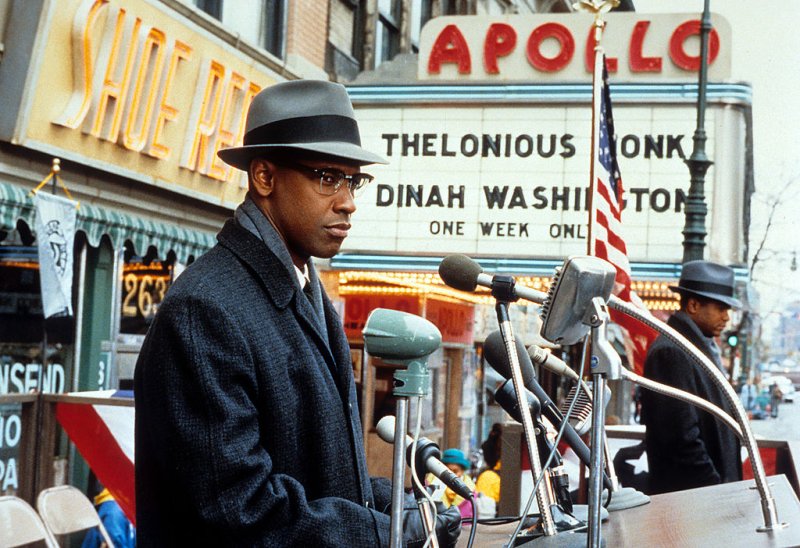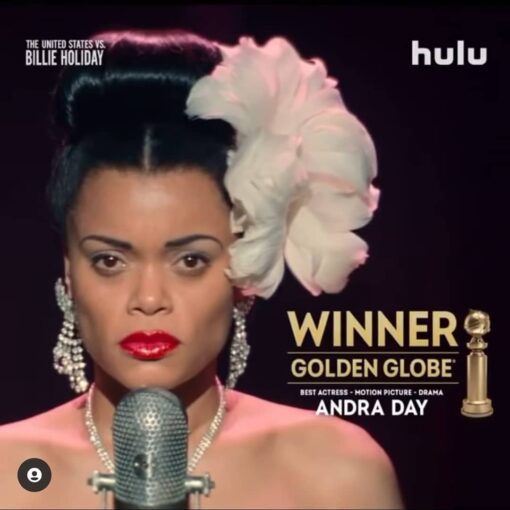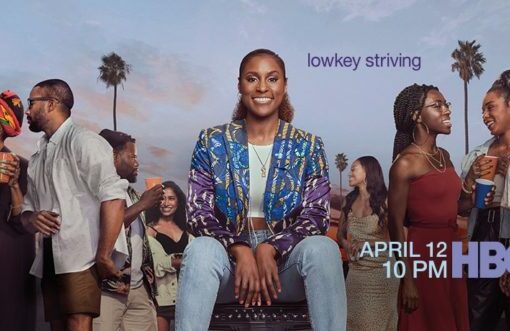Denzel Washington in Spike Lee’s 1992 Malcolm X, a biopic of the African-American activist.
In addition to recent high-profile additions to the canon of movies about black history, like Harriet and Marshall, Hollywood history is rich with films that make fitting watching for Black History Month. Below, Jacqueline Stewart — host of Silent Sunday Nights on Turner Classic Movies and the network’s first black host — offers, in her own words, six suggestions of films to watch for insights into the black experience.
They comprise fictional features, documentary films and even one “home movie,” and together tell an important story. “It’s important to recognize ways in which male and female black filmmakers from different backgrounds have developed their own style to get at this shared concern for trying to tell the truth about the African-American experience,” she says, “and to see film as a tool for doing that, and not relying on other people to tell our story.”
Within Our Gates (1920)
It’s one of the earliest feature films made by an African-American director, Oscar Micheaux, who was a pioneer in the race film movement, a whole industry of race movies, black-cast films, shown in theaters, wherever there were black audiences. It’s a film that shows us the migration of a black women from the South to the North — a very important experience for African Americans during the early part of the 20th century. Sylvia (Evelyn Preer) is running away from the deep trauma that occurs to her family in the South. Micheaux represents lynching, the rape of black women by white men, and the kinds of imprisonment African Americans were facing in the South in the system of sharecropping.
Its content is incredibly important for us to reflect on, and Micheaux was really unflinching in the way that he addressed social and political issues African Americans were facing during his time. Micheaux was a filmmaker who felt cinema could expose the truth about the black experience that wasn’t being exposed in mainstream media. This film is directly responding to D.W. Griffith’s film The Birth of a Nation (1915), in that Micheaux is saying that African Americans are also entitled to being full American citizens, and so it’s a film that’s remarkable in its political message. Micheaux’s films were invariably cut and altered by censors. Some people were really sensitive about some of the things he was showing in his films, and there had just been race riots in Chicago in the summer of 1919, so there was a lot of concern about showing a film so close to those violent events that could stir up negative feelings. Where to Watch: Library of Congress Youtube Channel, Amazon Prime, fuboTV, Kanopy,
George Washington Carver at Tuskegee Institute (1937)
This is about 12 minutes of footage of the legendary scientist at work at Tuskegee, where he taught for most of his career and had his lab. His experiments in crop rotation, and rotating cotton with, as we all know, peanuts, created a new model for how agriculture should work in the South to benefit not just his people, but all southerners. This country owes him a huge debt. We have a lot of still images of Carver, but this I think is the only moving image footage of him we’re aware of. It’s amateur footage. He was very private. He never wanted to exploit his scientific work for his own commercial gain. He didn’t publicize himself, so one of his assistants convinced him to have a friend who was a physician from Kalamazoo, Michigan, come and shoot some color Kodachrome footage of him.
It’s just remarkable to see him walking around, working with plants, working in his lab. Many people don’t know Carver was also an accomplished visual artist, so we see him standing with paintings he made, landscapes and still lifes. We see him crocheting. We talk a lot of about the importance of STEM education right now for young people and young people of color, and many of us who work in the arts think it should be called STEAM, so to see the creative side of this pioneering scientist is hugely inspirational, and this footage of him just makes him less of an abstract figure. It humanizes him. Where to Watch: The U.S. National Archives’ YouTube channel.
Still a Brother: Inside the Negro Middle Class (1968)
Publicity still of director and actor William Greaves from his Muhammad Ali documentary Ali the Man: Ali the Fighter (1975) John Kisch Archive—Getty Images The director of this film is William Greaves, an incredibly prolific documentary filmmaker. Produced for National Educational Television (NET), Greaves probably had to be very careful in the way that he made this film because the expectation of the network was that this would be a lighthearted profile of this interesting demographic shift that was happening — that so many then-called Negros were achieving middle-class status financially, and moving into social circles that had been closed to them before. Greaves really digs into the challenges that the black middle class is facing as it is trying to figure out to what degree can black people really assimilate into mainstream American society.
They can afford fancy cars and vacations on Martha’s Vineyard, but they are still facing so many of the problems that they faced before they were able to make this class transition. The title of the film comes from a high-ranking Urban League administrator, Horace Morris, who talks about his family getting harassed and assaulted by the Newark police, and says, “No matter how far up the economic ladder you climb, there’s still the oppressive prejudice of the white man — You’re still a brother.” It doesn’t matter how many degrees he has; this can still happen. So the film shows us issues that we’re still talking about today.
The film features a who’s who of African-American leaders: John H. Johnson [founder of Ebony magazine]; St. Clair Drake, an important sociologist of race; Julian Bond;Bayard Rustin, a key [figure in the] March on Washington. The assassination of Dr. Martin Luther King Jr. almost held up broadcast of this film. Cities were burning after his assassination, but [Greaves] was probably able to persuade the network that it was really important that this film be shown to help white audiences understand the history behind the sense of desperation and frustration that was so visible in black communities across the country after King’s assassination. Where to Watch: American Archive of Public Broadcasting
Illusions (1982)
Julie Dash is one of the most important independent filmmakers still working today, and this 34-minute film is her thesis film from when she was a film student at UCLA. Set in 1940s Hollywood, it’s about a woman, Mignon Dupree (Lonette McKee), a rare female executive in a Hollywood studio. What her coworkers don’t know is she is a black woman passing for white. It was shot in black and white, so in many ways the style of the film echoes the style of classic Hollywood films. The film is really a reflection on the history of American filmmaking — whose stories get told in classic Hollywood films, whose stories are marginalized. We see how there are small but important ways she can make a difference and allow for more voices to be heard and stories to be told in Hollywood filmmaking.
The 1970s saw this important rise in black cast films and “Blaxsploitation” films, and Dash was part of the L.A. Rebellion, a group of filmmakers making films that were providing a different kind of representation of African-American lives. Many Blaxsploitation films set in urban environments seem to glorify character types that are not heroic, not positive, such as drug dealers, and there’s a way in which these films show a superficial portrayal of black life. In contrast, Dash wanted to make films that were not sensationalized stories, about everyday issues and experiences, that showed how black people were living their lives and trying to make sense of their lives.
She is at the start of an important wave of black independent filmmaking in the late ’70s and early ’80s that peaks when Spike Lee comes onto the scene with She’s Gotta Have It.Where to Watch: KanopyStep Into History: Learn how to experience the 1963 March on Washington in virtual reality
Malcolm X (1992)
This is the only film based on the true story of a real historical figure I’m including because it’s just an epic film about a figure who is both controversial and beloved by so many African-American people. Even before the film was released there was a tremendous amount of conversation about what this film would be. It was supposed to be directed by Norman Jewison, but Spike Lee campaigned to get the project and was vocal about the fact that a film about Malcolm X had to be directed by an African American. Some people were thrilled Spike Lee was directing the film, and there were people who weren’t big fans of Spike Lee, like Amiri Baraka, the poet activist, who didn’t think he was the right black director for this film and didn’t want to see Malcolm X’s legacy oversimplified.
So there was a tremendous amount of pressure on Spike Lee. He insisted that the film had to be at least three hours long. The film was going over-budget, and one of the reasons was because he had a unit shoot Malcolm X’s pilgrimage to Mecca on location in Mecca. So he went to black millionaires and entertainers — Oprah, Michael Jordan and others — who gave him the money to complete the film. That shows the importance of this kind of filmmaking for narrating black history. The stakes were so high, and people understood this was going to be film that would have a lasting impact on the ways people understood Malcolm X’s legacy. Malcolm X’s pilgrimage to Mecca and the way that transforms his understanding of race as he commits in this deep way to practice his belief as a Muslim and recognizes that community and solidarity can be built across racial lines. The film spends a lot of time looking at what is the first part of Malcolm X’s autobiography, his life before he joined the nation of Islam, and we really get a sense of how he came of age and the racial violence his family experienced. It gives us a sense of where he came from. Spike Lee humanized this icon.
It’s a film that, like so many of Spike Lee’s films, doesn’t just want us to sit and be entertained, but it tries to grab us in really powerful ways, so it concludes with this montage of young people saying “I am Malcolm X,” including students in South Africa, then we see Nelson Mandela, who has just been released from prison, making a cameo at the end of the film and quoting Malcolm X. It’s also Denzel Washington’s best performance, starring as Malcolm X, and it’s just a remarkable document of Spike Lee’s audacity as a filmmaker and the ways that he is always trying to animate history for his audiences. After this film, you couldn’t talk about great American directors without also including Spike Lee. Where to Watch: Amazon Prime, Fandango Now, Google Play, iTunes, Kanopy, Microsoft, Vudu, YouTube
Eve’s Bayou (1997)
This is Kasi Lemmons’ first feature film, and one of the first films directed by an African-American woman to have an international release. It’s set in Louisiana in the 1960s, and one of the things I really appreciate about this film is the way it gives us a picture of southern family life during this period. It shows the richness of black communities, even though we know that they are living in conditions of racial segregation, it delves into the intimacies and the dramas of this particular community, and we get a close-up look at how family bonds are created and broken, how the legacy of slavery can have an impact on these families generations later. And not unlike Still a Brother, it’s also a film that documents the black middle class lifestyle and success and gets us to recognize that aspect of our community’s history with beautiful production design and attention to detail. It got incredible critical praise when it was released. Where to Watch: Amazon Prime Google Play, Hulu, iTunes, MaxGo (Cinemax), Microsoft, Vudu, YouTube
Originally Published By Time Magazine





